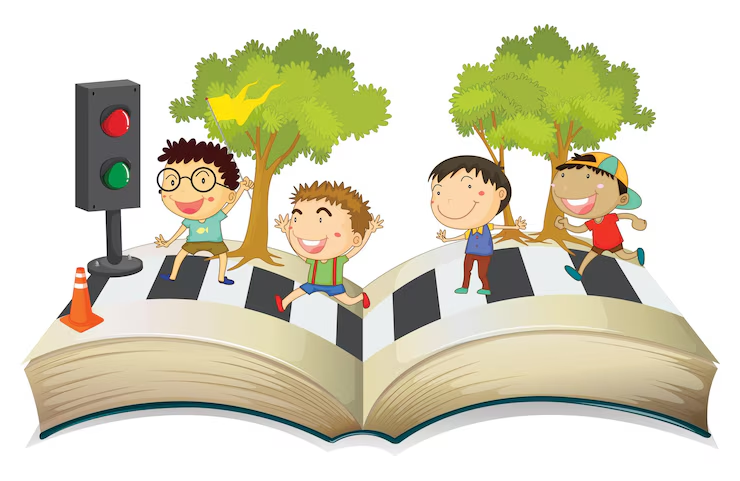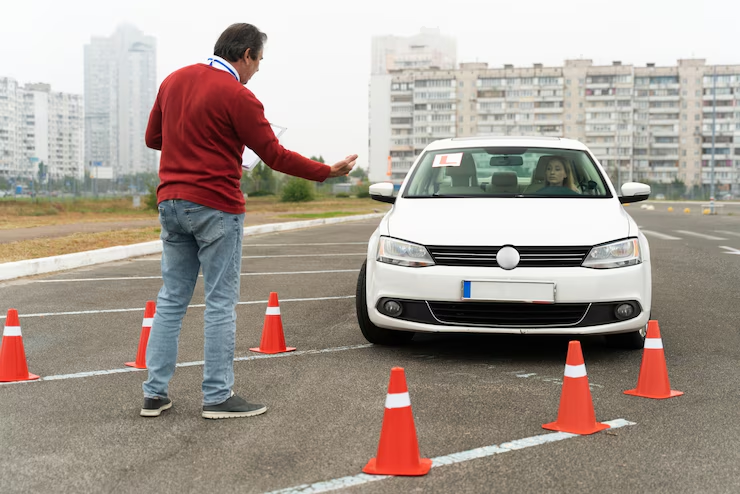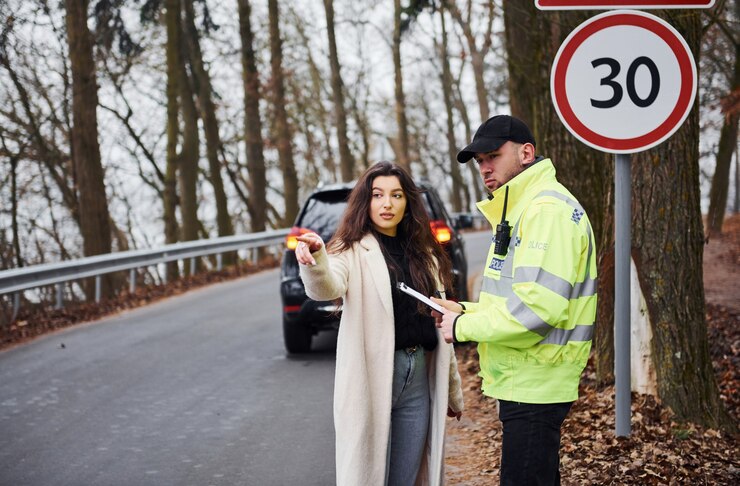Introduction
Roads that connect cities, towns and communities around the world are traversed daily by millions of drivers. Understanding Traffic Signs and Their Importance. Regardless of the length of the trip these trips mostly depend on a communication system that many of us take for granted: traffic signs.A well-functioning and secure transportation system depends on these signs, which are more than just roadside markers.
Directions, speed restrictions, hazards, road conditions, and legal requirements are all important information that traffic signs give.Without them, there would be a significant rise in the likelihood of accidents and chaos on our roadways. Not only is it necessary to comprehend traffic signs in order to pass a driving exam, but it is also a basic component of road safety that impacts bicycle riders, pedestrians, passengers, and drivers alike.
The History of Traffic Signs
Over the past century, there has been a major evolution in traffic signs.Road signs originated in the Roman Empire, when distances were marked with stone markers.Standardized signage became necessary in the 19th century as bicycles and then cars gained popularity.
Early in the 20th century the first contemporary road signs were installed in Europe.An important turning point was the International Road Congress in Paris in 1909, which produced some of the earliest traffic signs that were accepted worldwide. Global standards started to take shape as the number of vehicles and international travel increased over time.
Even though there are still regional variations nowadays,the majority of nations combine colors, shapes, and symbols to communicate comparable ideas which makes it simpler for drivers from various backgrounds to comprehend traffic laws.
The Three Main Categories of Traffic Signs
Traffic signs are generally grouped into three main categories, each serving a distinct purpose:
Regulatory Signs
These signs communicate laws and regulations that drivers must obey.Violating these signs typically results in fines points on your license or even arrest.
Examples:Stop signs speed limit signs, no entry, yield, no U turn.
Appearance:Often white or red with black text or symbols.
Warning Signs
Warning signs alert drivers to potential hazards or changes in the road ahead.They encourage caution and reduced speed.
Examples:Sharp turn ahead, slippery road, pedestrian crossing and animal crossing.
Appearance:Usually yellow with black text or symbols and often shaped as triangles or diamonds.
Guide Signs
These signs provide information to help drivers navigate routes and reach destinations.
Examples:Exit signs, distance markers, rest area signs and route numbers.
Appearance: Commonly green, blue or brown with white lettering.
Each type plays a specific role in promoting safe, efficient, and informed driving behavior.
Interpreting the Shapes and Colors of Traffic Signs

Traffic signs are designed to be instantly recognizable, even from a distance or at high speed. This is achieved through standardized shapes and colors
| Shape | Meaning |
| Octagon | Exclusively used for stop signs |
| Triangle (upside-down) | Yield |
| Circle | Railroad crossing (US) / Restrictions (EU) |
| Rectangle | Information or guidance |
| Diamond | Warning signs (especially in the US and Canada) |
| Pentagon | School zone or school crossing |
| Color | Meaning |
| Red | Prohibitive or stop |
| Yellow | General warnings |
| Green | Permitted movements/directions |
| Blue | Services or informational guidance |
| White | Regulatory information |
| Orange | Temporary traffic control (construction zones) |
| Brown | Recreational or cultural interest sites |
Understanding these basics allows drivers to react appropriately and in a timely manner.
Importance of Traffic Sign in The Road Safety
Traffic signs serve a vital function in preventing accidents or ensuring smooth traffic flow.
Preventing Collisions
Signs such as stop yield and speed limit signs reduce confusion and help establish clear right of way rules minimizing the risk of accidents at intersections and pedestrian crossings.
Guiding Driver Behavior
Signs give instructions on where to go what not to do, and how to navigate unfamiliar routes.Without them drivers would rely on guesswork increasing stress and chances of error.
Alerting to Hazards
Warning signs are often the only notice drivers have before sharp curves steep grades or wildlife zones.These alerts give drivers time to slow down or take precautions.
Supporting Emergency Services
Clear signage aids emergency response vehicles by helping them locate destinations quickly navigate traffic efficiently.
Protecting Vulnerable Road User
Signs that mark school zones pedestrian crossings and bike lanes protect children, walkers and cyclists by encouraging drivers to slow down and be alert.
Special Types of Traffic Signs
In addition to the standard categories, there are specialized signs that serve unique roles:
Temporary Signs of road
Used during roadworks, detours, or emergencies, these signs are often orange and include flashing lights or reflective surfaces for visibility.
Electronic/Digital Signs
Dynamic signs on highways provide real time updates about traffic, weather, construction zone and accident alerts.
Variable Message Signs
Often used in cities and on highways, VMS can change their messages depending on traffic conditions, speed limits, or emergency alerts.
Smart Signs
With advancements in technology some traffic signs now include sensors that adjust based on weather or traffic volume, improving responsiveness and safety.
Commonly Misunderstood Traffic Signs
Despite education, some signs are often misinterpreted, leading to unsafe driving:
- Yield vs. Stop: Yield means give way not necessarily stop.Stop signs require a full halt.
- No Parking vs.No Stopping: No stopping means you cant stop the vehicle even briefly no parking allows temporary halts for loading and unloading.
- Speed Limit vs.Advisory Speed: A posted speed limit is legally enforceable an advisory speed suggests a safe speed for specific road conditions.
Clarifying these can help drivers make better decisions on the road.
Global Variations in Traffic Signs
While many countries follow international guidelines, there are still regional differences worth noting:
- Europe: Most countries follow the Vienna Convention; signs rely heavily on symbols rather than text to accommodate multiple languages.
- United States: Uses a mix of symbols and English words; unique shapes and fonts distinguish U.S. signs.
- Japan: Uses both Japanese characters and internationally recognized symbols.
- Middle East: Bilingual signs (Arabic and English) are common, with distinctive color schemes.
Travelers should familiarize themselves with local sign conventions when driving in a new country.
The Role of Traffic Signs in Driver Education

Learning to recognize and obey traffic signs is a core part of driver education programs around the world.This includes:
Theory Tests: Assess knowledge of sign meanings, right-of-way rules, and hazard awareness.
Practical Exams: Ensure new drivers can respond to signs in real-world settings.
Refresher Courses: Help older drivers or those with expired licenses update their knowledge.
Educating drivers thoroughly on traffic signs contributes to long-term road safety and responsible driving habits.
Modern Technology and the Future of Traffic Signs
With the rise of smart vehicles and connected infrastructure traffic signs are undergoing a digital transformation:
In Car Sign Recognition
Modern cars use cameras and sensors to detect and display road signs on the dashboard alerting drivers in real time.
Augmented Reality Navigation
Some GPS systems project traffic signs onto the windshield improving visibility without distraction.
Vehicle to Infrastructure Communication
Future vehicles will communicate directly with traffic signs and signals receiving updates on speed limits, road closures, and hazards.
Digital Signage Networks
Urban planners are exploring centralized digital signage systems that update automatically based on traffic data reducing congestion and improving route planning.
These innovations point toward a future where traffic signs are more interactive intuitive, and integrated into smart transportation systems.
Conclusion
The unsung heroes of road safety are traffic signs. They might not have the emotional impact of crash numbers or the technological glitz of driverless automobiles, but their presence, clarity, and design are essential to any safe travel experience.
In addition to improving their own safety, drivers who comprehend traffic signs and recognize their significance also improve the safety of other road users. Traffic signs are your constant companions, guarding, warning, and directing you at every step, regardless of your level of driving experience or whether you’re a visitor in a strange country.
Remember this the next time you see a straightforward yield sign or a highway exit marker: a century of engineering, design, and dedication to your safety lies behind those signs.

